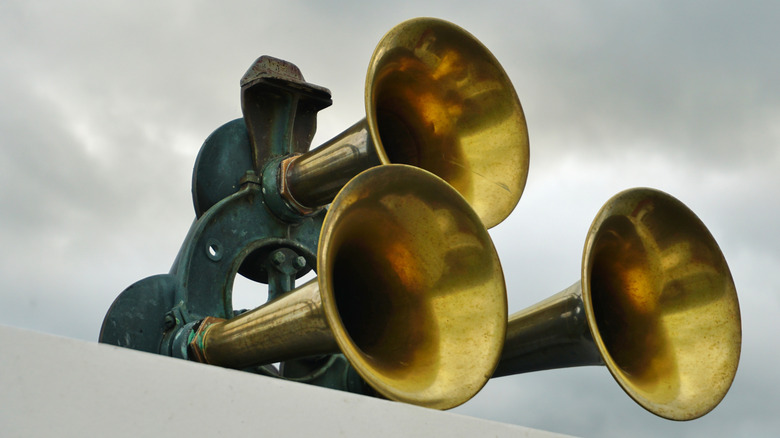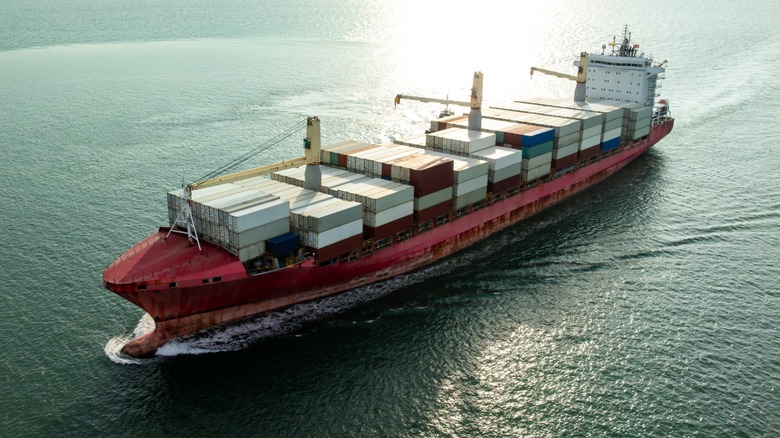Why Do Ships Honk Three Times? Here's What It Means
Charting a course for open waters can be a thrill for those who enjoy the crash of a wave and the salty scent of ocean air. But boarding any ship that's setting off to sea — be it a red-bottomed cargo vessel, a cruise liner, or a personal craft — comes with its own set of perils. Though it's rarer today than in days past, those perils do still include the potential to collide with other ocean bound vessels. There are, of course, certain safeguards in place to ensure safety at sea, as well as the security of potentially priceless cargo. And yes, one of those safeguards is to honk a ship's horn three times in succession.
If you've spent any time on the docks, you've no doubt heard that sound with some regularity. There's good reason for that, as three short horn blasts is the signal that a ship is operating in astern propulsion. If you're not familiar with nautical terms, "astern propulsion" essentially means a ship is backing up, as is often required when they are pushing off from the dock. On some occasions, you might also have heard those three short blasts of a ship's horn preceded by one long one. In this instance, the three blasts are still meant to signal that a ship is backing up. However, the long blast beforehand is intended to convey to dock dwellers the ship's intention to leave dock, and might be sounded whether it's backing up or not.
A ship's honking patterns can signify many other things
The three honk warning and its single long honk permutation are just two of many such signals designed for use by cargo ships and their massive engines, as well as other vessels. But before we get to those, we should explain the difference between the lengths of each blast, with a short honk generally lasting about one second, and a long one stretching to between four and six. We'll also note that the signals are intended to be used only when vessels are passing within a half-mile of each other.
Under those circumstances, when a ship offers one short blast from its horn, that signals that you intend to leave the oncoming ship on your own port side. The same signal can be used when a vessel is approaching a slower ship from behind, and signals its intent to pass on its own port side, which is the other ship's starboard. Concurrently, the use of two short blasts from the horn is intended to notify another vessel that it will be passing on its own starboard side, and, like the single horn blast, can also be used when approaching to pass another ship from behind.
As important as those steering signals are in helping to ensure nautical safety, there is one more that is every bit as vital, as five concurrent short blasts from the horn signifies danger. This signal is intended to be used on the rare occasions that passing ships are unclear about an oncoming vessel's intended maneuver, or if those piloting a ship believe said maneuver to be dangerous to either ship.

